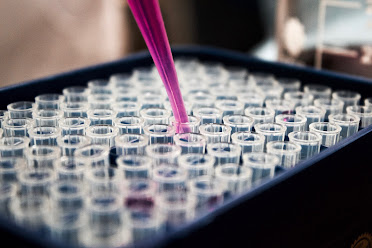Air Passageway
The air passageway consists of the parts through which the outside air comes in the lungs and after the exchange of gases it goes out. This passage of air consists of the following parts.
The nose encloses the Nasal Cavity.
Nostrils:
It opens to the outside through the openings called the Nostrils.
Division of Nasal Cavity:
The nasal cavity is divided into two portions by a wall. Each portion is lined by fine hairs and mucous which filter the dust particles from the air. The mucous also moistens and warm the incoming air and keeps its temperature nearly equal to that of the body.
Internal Nostrils:
The nasal cavity opens into the pharynx by means of two small openings called internal nostrils.
Pharynx:
Pharynx is the muscular passage and is common to both food and air. It extends to the opening of oesophagus and the larynx. The air goes from the pharynx into the larynx.
Glottis:
It is a narrow opening at the floor of pharynx which leads into larynx.
Larynx:
The larynx is a box, made of cartilage. It is present between pharynx and trachea. It is also called Voice Box.
Vocal cords:
Two pairs of fibrous brands called vocal cords are stretched across the larynx. The vocal cords vibrate when the air passes through them. This vibration produces sounds.
Wind pipe:
Larynx continues to the trachea, which is also called the wind pipe. It is about 12cm long tube which lies in the front of the oesophagus. There are C-shaped cartilagenous rings in the wall of Trachea. The cartilages keeps the trachea from collapsing even when there is no air in it.
Bronchi:
On entering the chest cavity , the trachea divides into smaller tubes called Bronchi (singular bronchus).Bronchioles:
The bronchi continue dividing in the lungs until they make several fine tubes called Bronchioles.
Alveolar ducts:
The bronchioles end as fine tubules called alveolar ducts.
Alveoli:
Each alveolar duct opens into a cluster of pouches called Alveoli.
.png)
.png)

.png)
.png)
.png)
.jpg)











.png)